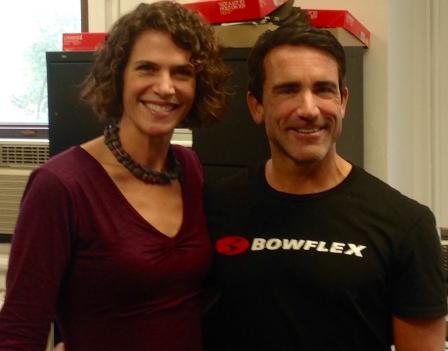Fitness and Nutrition FAQ: An Interview with Exercise Expert Tom Holland
Nutrition Diva asks internationally known exercise physiologist and trainer Tom Holland your most frequently asked questions about exercise and fitness nutrition.
Monica Reinagel, MS, LD/N, CNS
Listen
Fitness and Nutrition FAQ: An Interview with Exercise Expert Tom Holland
Although food and nutrition is the primary focus of this column, I get lots of questions from you about various aspects of fitness, which, in a perfect world, goes hand in hand with a healthy diet. This week, I had an opportunity to talk with Tom Holland, an internationally known exercise physiologist, author of numerous books and fitness DVDs, and national trainer for Bowflex in-home gyms from Nautilus. I thought I’d take advantage of Tom’s expertise by running a few of your most frequently asked questions by him.
You can listen to the entire interview by clicking on the podcast player in the upper right corner (or you can subscribe to the Nutrition Diva podcast on iTunes or Stitcher!). Below are some of the highlights.
How to Stay Motivated
A lot of us are really motivated when we start a new diet or exercise program but then after a couple of weeks we start to lose the scent. Tom says that goal setting is absolutely crucial to sticking with it.
Registering and training for a charity run, for example, can be a great way to give your workout extra purpose. Doing something for a good cause or with friends can be additional motivation. When you accomplish that interim goal, however, be sure to set a new one to keep you moving forward.
Biggest Mistake for Pre- and Post-Workout Nutrition
I get a ton of questions from people wanting to know what they should eat to fuel and recover from their workouts. Of course, it’s not a one-size-fits-all answer; it really depends on your individual exercise regimen and goals. But Tom says the most common mistake he sees is overestimating how much they need to eat to perform well, and also eating too much after a workout.
Guard against the tendency toward “compensatory eating,” where we give ourselves permission to eat more after a workout, and end up eating far more calories than we burned.
See also: What to Eat Before, During, and After a Workout
How to Balance Cardio and Strength Training
Cardiovascular exercise (like jogging or biking) and strength or resistance training (such as weight lifting) have completely different but complementary benefits for our health. But if time is tight, Tom says you can combine both in one exercise session with circuit training. Alternate strength moves (such as pushups or lunges) with quick bursts of fast moves (such as jumping jacks), and move quickly between exercises to keep your heart rate up. The great thing is that you can get an efficient workout without any fancy equipment.
What Is “Weight-Bearing” Exercise?
We’re told that weight-bearing exercise helps protect against bone loss. But there seems to be a lot of confusion about what does and doesn’t count as weight-bearing. In a nutshell, Tom says that weight-bearing exercise requires that you be “on your own against gravity.” So, this includes walking, climbing stairs, and free-weight exercises, where you are resisting gravity without support. Swimming, biking, and rowing machines, although they may be good for your heart, are not as effective in building strong bones. Tom adds that introducing more impact (by running or jumping rope instead of walking, for example) makes it even more effective.
See also: Diet for Healthy Bones
Please listen to the interview for more of my conversation with trainer Tom Holland. You can find Tom’s exercise DVDs and more at his website.
What other questions do you have about nutrition and fitness? Post them on the Nutrition Diva Facebook page to keep the discussion going.

